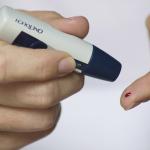The Kansas Highway Patrol is using a new device called SoToxa, which is marketed by Abbott, to help detect people who are driving while high on drugs.
impaired driving
I last wrote about this in December 2020; here is the gist.
Over 15 years, from 2000 to 2015, there were 612,030 motor vehicle fatalities, 37% involved one or more drivers with a positive BAC. While the majority, 85%, involved a legally impaired level, roughly 34,000 deaths involved lower amounts.
A bus driver involved in a crash was charged with “child endangerment, driving while impaired and possession of drug
With the Jupiter Police dash-cam video of Tiger Woods’ DUI arrest just released, the public gets a further glimpse into the unfortunate event.







